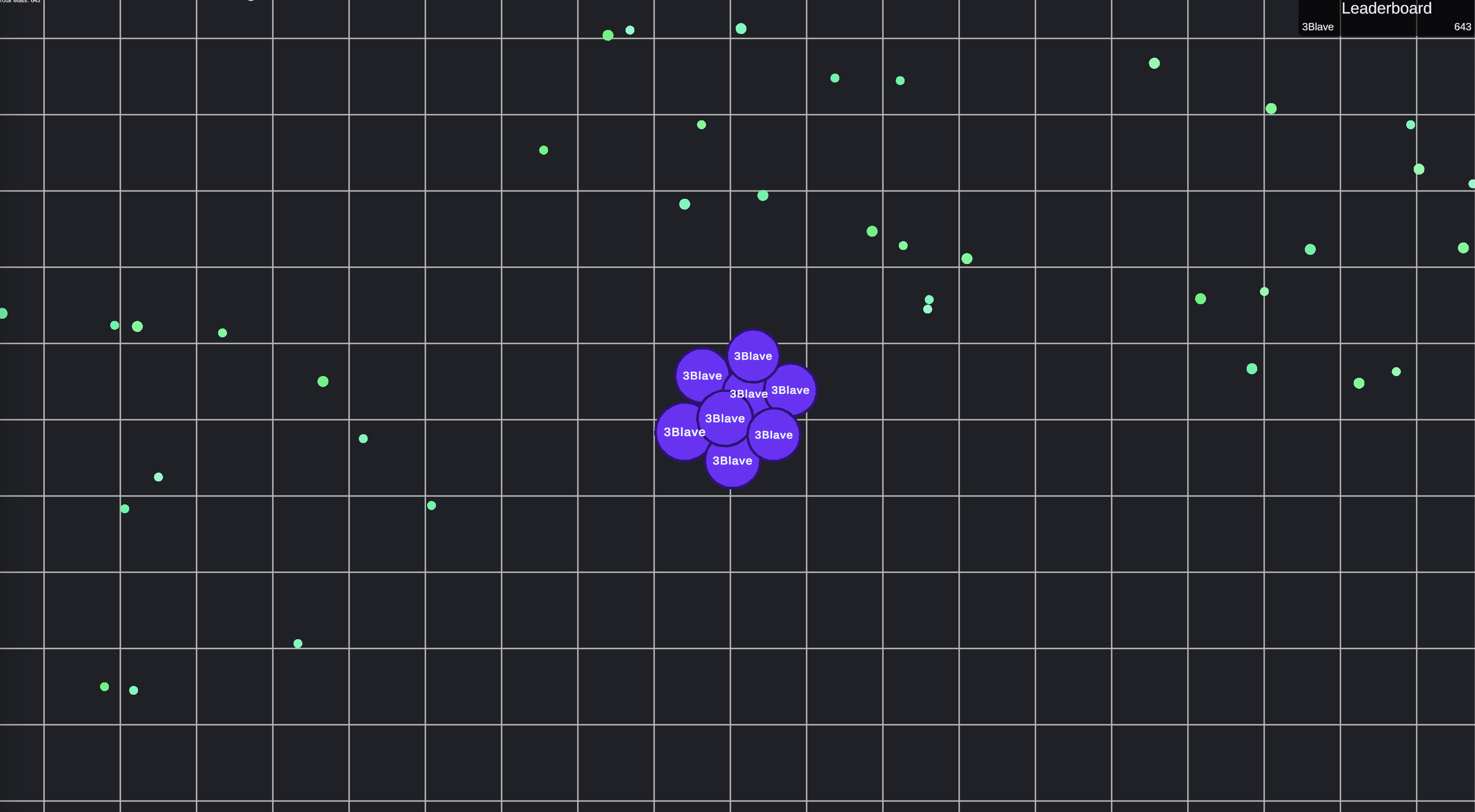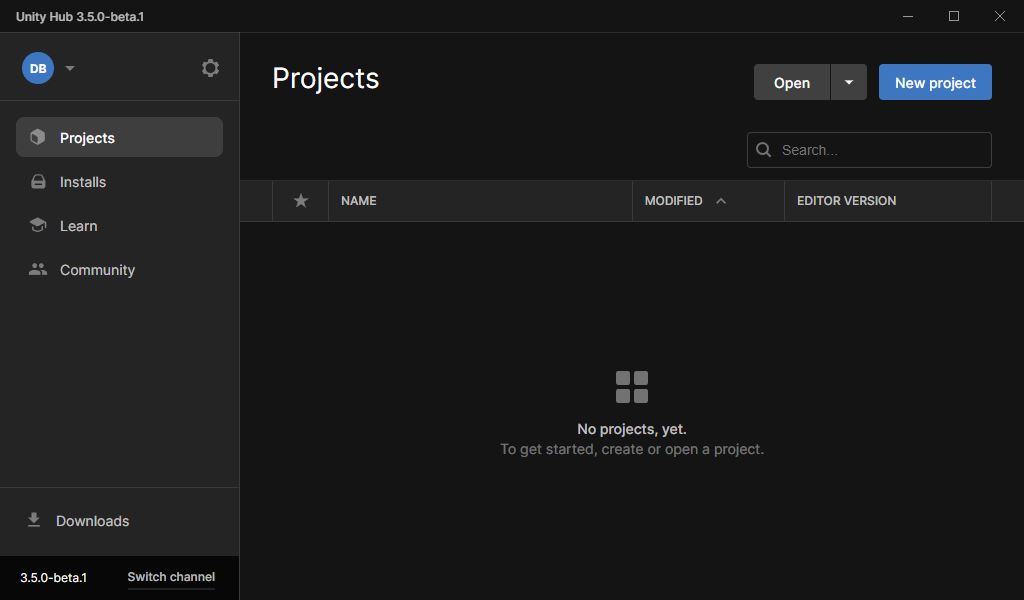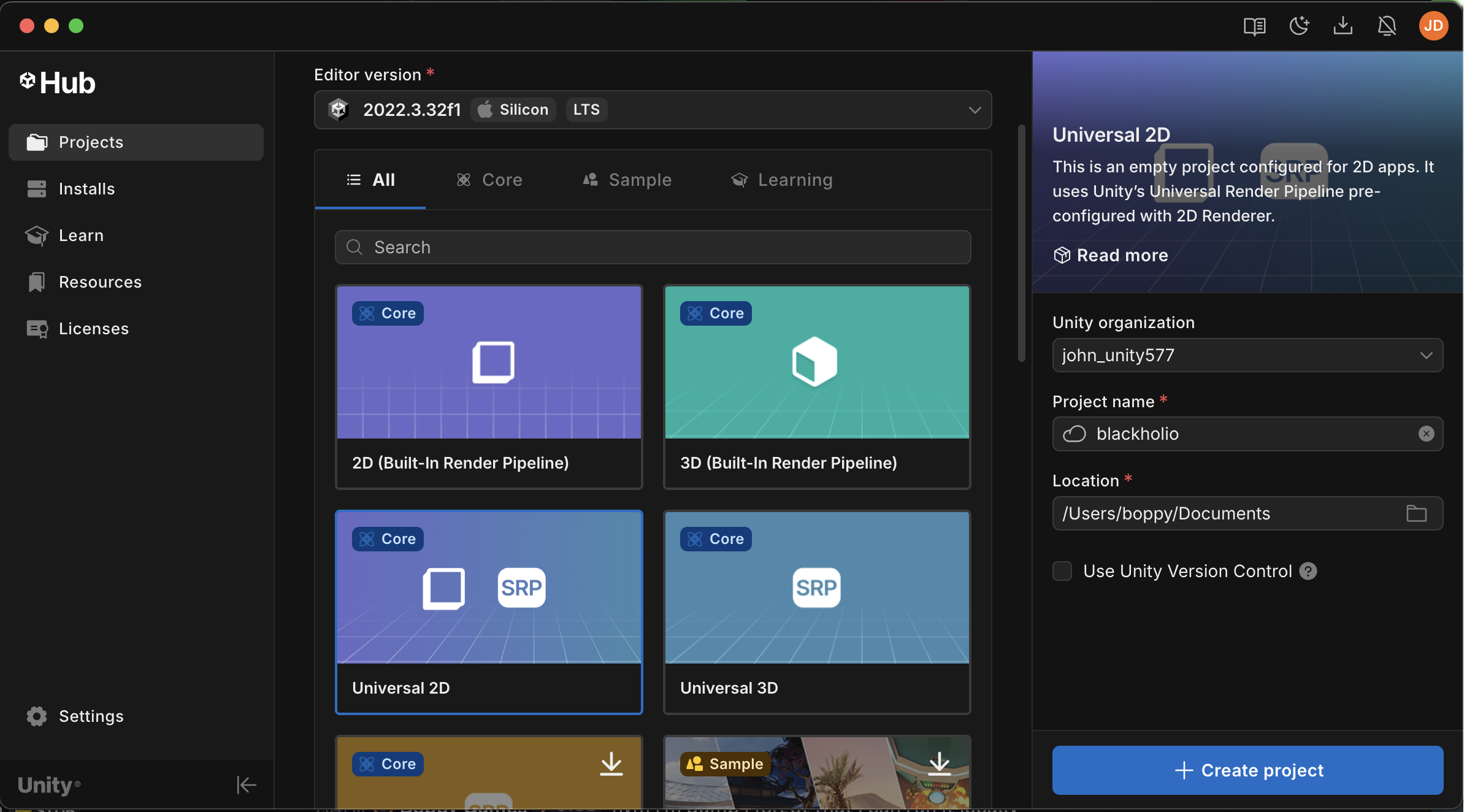Setup

Need help with the tutorial? Join our Discord server!
A completed version of the game we'll create in this tutorial is available at:
https://github.com/clockworklabs/SpacetimeDB/tree/master/demo/Blackholio
Setting up the Tutorial Unity Project
In this section, we will guide you through the process of setting up a Unity Project that will serve as the starting point for our tutorial. By the end of this section, you will have a basic Unity project and be ready to implement the server functionality.
Step 1: Create a Blank Unity Project
SpacetimeDB supports Unity version 2022.3.32f1 or later. See the overview for more information on specific supported versions.
Open Unity and create a new project by selecting "New" from the Unity Hub or going to File -> New Project.

Make sure to choose the Universal 2D template for your new project.
For Project Name use blackholio. For Project Location select a directory that you can navigate to via the CLI because we will need to do so in part 2.

Click "Create" to generate the blank project.
Import the SpacetimeDB Unity SDK
Add the SpacetimeDB Unity Package using the Package Manager. Open the Package Manager window by clicking on Window -> Package Manager. Click on the + button in the top left corner of the window and select "Add package from git URL". Enter the following URL and click Add.
https://github.com/clockworklabs/com.clockworklabs.spacetimedbsdk.gitThe SpacetimeDB Unity SDK provides helpful tools for integrating SpacetimeDB into Unity, including a network manager which will synchronize your Unity client's state with your SpacetimeDB database in accordance with your subscription queries.
Create the GameManager Script
- In the Unity Project window, go to the folder where you want to keep your scripts (e.g.,
Scriptsfolder). - Right-click in the folder, then select
Create > C# Scriptor in Unity 6MonoBehavior Script. - Name the script
GameManager.
The GameManager script will be where we will put the high level initialization and coordination logic for our game.
Add the GameManager to the Scene
-
Create an Empty GameObject:
- Go to the top menu and select GameObject > Create Empty.
- Alternatively, right-click in the Hierarchy window and select Create Empty.
-
Rename the GameObject:
- In the Inspector, click on the GameObject’s name at the top and rename it to
GameManager.
- In the Inspector, click on the GameObject’s name at the top and rename it to
-
Attach the GameManager Script:
- Drag and drop the
GameManagerscript from the Project window onto theGameManagerGameObject in the Hierarchy window. - Alternatively, in the Inspector, click Add Component, search for
GameManager, and select it.
- Drag and drop the
Add the SpacetimeDB Network Manager
The SpacetimeDBNetworkManager is a simple script which hooks into the Unity Update loop in order to drive the sending and processing of messages between your client and SpacetimeDB. You don't have to interact with this script, but it must be present on a single GameObject which is in the scene in order for it to facilitate the processing of messages.
When you build a new connection to SpacetimeDB, that connection will be added to and managed by the SpacetimeDBNetworkManager automatically.
Click on the GameManager object in the scene and click Add Component. Search for and select the SpacetimeDBNetworkManager to add it to your GameManager object.
Our Unity project is all set up! If you press play, it will show a blank screen, but it should start the game without any errors. Now we're ready to get started on our SpacetimeDB server module, so we have something to connect to!
Create the Server Module
We've now got the very basics set up. In part 2 you'll learn the basics of how to create a SpacetimeDB server module and how to connect to it from your client.